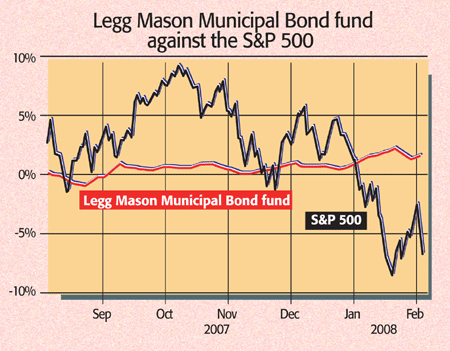
Given the turmoil that has engulfed the bond insurance market, investors might have been surprised to see billionaire Warren Buffett sniffing around the sector recently. But rather than buy any of the existing insurers, he has launched the Berkshire Hathaway Assurance Corporation, offering municipal bond insurance, and has already underwritten around $10m of outstanding New York City debt due to mature in 2012.
It seems a bold move – concerns over the health of large rivals, such as Ambac and MBIA, have been partly to blame for the stockmarket turmoil of recent months. But Buffett’s track record suggests he has probably spotted another opportunity to clean up. So how can you do the same?
What are municipal bonds?
“Bonds are boring and bonds sold by states and localities are boring and also complicated,” is how the FT’s Joe Mysak describes what was, until the monoline crisis, an obscure investment only of interest to wealthy US investors looking for the solid returns and tax-free yields offered on municipal bonds, or “munis”. These are issued by US states, cities and county governments to raise money to spend on public infrastructure projects, including road improvement, school and hospital refurbishments, and sports facilities.
The attraction from a US investor’s perspective is that, unlike income from Treasuries or corporate bonds, the interest on munis is paid free of income tax. It’s also fairly low risk – public authorities are ultimately backed by the taxpayer and, according to James Colby at Van Eck, the default rate is below 1%. So why do bond insurers get involved at all, given that most issuers are unlikely to go out of business?
Buying a top credit score
It comes down to the size of the market. As the Wall Street Journal notes, there are “literally thousands of issuers, some of whom rarely sell debt”. By buying bond insurance from a firm such as Ambac, MBIA, or the new Berkshire Hathaway vehicle, issuers get two main benefits. Firstly, by paying a premium to a bond insurer with a “triple-A” credit rating, the issuer – who may not enjoy such a high rating themselves – can issue the underwritten munis as triple-A debt. This makes the bond cheaper to issue, thanks to its low default risk.
The second benefit is that investors buying bonds from lesser-known public bodies with a patchy history of debt issuance find them easier to price once they have bond insurer backing. This in turn makes the bonds easier to sell. As a result, the Wall Street Journal estimates that “more than half of all the munis brought to market recently came with insurance”. Yet despite this fact, there has been a huge sell-off of municipal bonds, which has seen yields (normally only around 80%-90% of those available on similarly safe US Treasuries, thanks to the income tax exemptions enjoyed by munis) climb to 100% or more.
How bond insurers went bad
Why the sell-off? Because, as John Birger notes in Fortune, the listed bond insurers didn’t stick to muni-bond underwriting. Tempted by the juicier fees available for underwriting far riskier corporate debt instruments, such as CDOs (often backed by subprime mortgages), they quickly became embroiled in “the Wall Street death trap”.
As subprime debt collapses in value, the bond insurers have taken some big hits. Ambac recently saw a massive $3.5bn dent in profits after losing its AAA-credit rating from credit ratings agency Fitch in mid-January. Here’s the rub for muni bonds – if the bond insurers get downgraded, then so do all the bonds they have guaranteed. And it’s that prospect that has seen muni bonds being dumped across the board as nervous investors bail out of everything with any connection to subprime debt.
How to follow Buffett
But Michael Pollock in the Wall Street Journal spots a “buying opportunity”. The sell-off means that “insured bonds have been marked down to price levels where they would trade if they were uninsured”. Then there’s the “miniscule default rate” on most munis, which is only around 0.06% – even on the lowest-rated bonds – mainly because the “general obligation” bonds that make up most of the market are backed by the full taxing authority of the issuer.
Chuck in the fact that further cuts in interest rates from the Federal Reserve will be good for bond prices generally and suddenly an unloved sector looks tempting. “If you can stomach some volatility in the short term, you’ll make some money,” says fund manager Geoffrey Schechter of MFS.
But what to buy? Muni bonds can be difficult and expensive for private investors to buy individually and the tax benefits are normally limited to US investors. So a better bet is to go for a fund. The cheapest route is via an exchange-traded fund, such as the Barclays iShares S&P Municipal Bonds (AMEX:MUB), with an expense ratio of just 0.25%. Or buy a managed municipal bonds fund, such as Legg Mason Partners Managed Municipals (SHMMX), which carries a three-star rating with “below average” risk from Morningstar. The expense ratio is a comparatively inexpensive 0.7%.